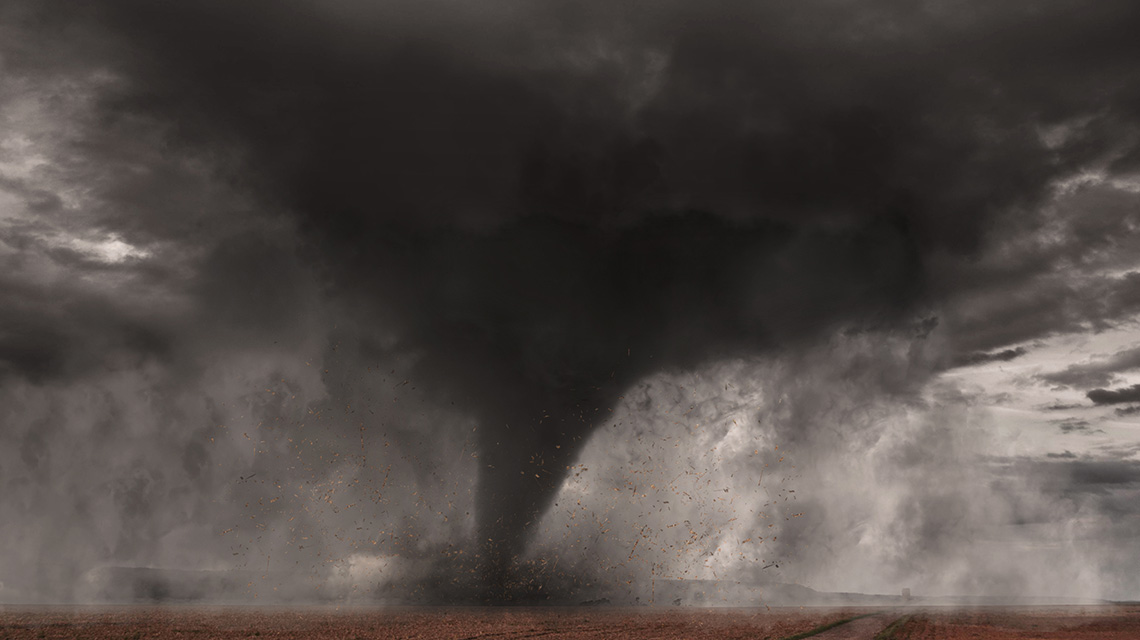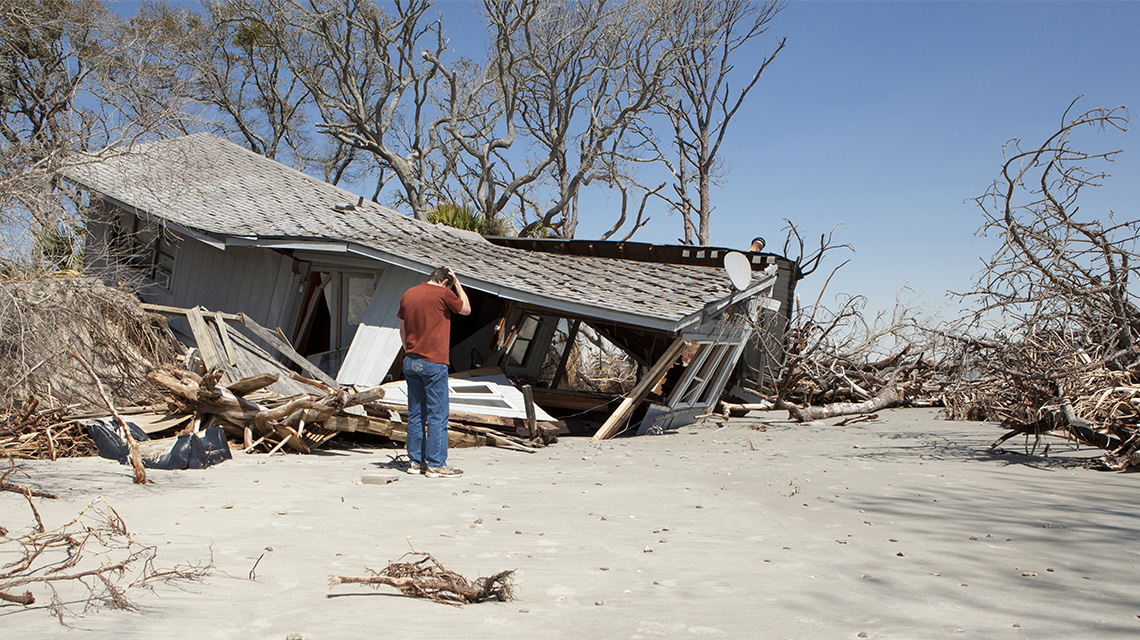Tornados
A tornado is a violently rotating column of air that is in contact with both the surface of the Earth and a cumulonimbus cloud or, in rare cases, the base of a cumulus cloud.
A Tornado can:
- Happen anytime
- Bring intense winds
- Look like funnels
- Sound like a train
If you spot a tornado:
- Tune in to your NOAA Weather Radio, local news channels, and/or official social media accounts for updated weather information.
- Find a safe shelter immediately, such as a safe room, basement, storm cellar, or small interior room of your house.
- Stay away from windows, doors, and outside walls
- Watch out for flying debris
- Use arms to protect your head and neck
How to Prepare:
Know your area's tornado risk.
In the south, we are prone to tornadoes, especially during the spring and summer.
Know the signs of a tornado. Rotating and funnel-shaped clouds, approaching cloud of debris or a loud roar like a freight train.
Pay attention to weather reports.
Meteorologists can predict when conditions might be right for a tornado.
Identify and practice going to a safe shelter.
Interior room of your home, storm shelter, the lowest level of your home or building.
Plan for your pet.
They are family members, so they need to be included in your family's emergency plan.
Prepare for a long-term stay at home or shelter in place.
Gather emergency supplies, cleaning supplies, non-perishable foods, water, medical supplies, and medication.
Staying Safe During a Tornado
Immediately go to the safe location that you have Identified.
Pay attention to NOAA Weather Radio or local news channels and/or local alerting systems.
For current emergency information and instructions.
Protect yourself.
Cover your head or neck with your arms and putting materials such as furniture and blankets around or on top of you.
Do not try to outrun a tornado in a vehicle.
If you are in a car or outdoors and cannot get to a building, cover your head and neck with your arms and cover your body with a coat or blanket, if possible.
Staying Safe After a Tornado
Save your phone calls for emergencies and use text messaging or social media.
To communicate with family and friends.
Pay attention to NOAA Weather Radio and local authorities
Get the latest for updated information.
Stay clear of fallen power lines or broken utility lines.
Contact your healthcare provider if you are sick and need medical attention.
Continue to shelter in place and wait for instructions.
Wear appropriate gear during cleanup.
Thick-soled shoes, long pants and work gloves.


